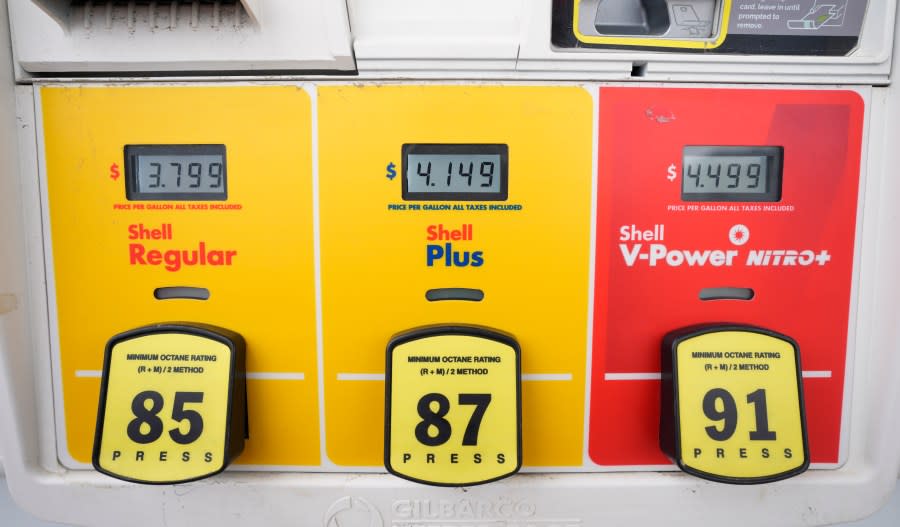Only a few states offer 85-octane gas: Here’s why

DENVER (KDVR) — Gas prices are fluctuating across the country, and a few states offer a “cheaper” octane option that isn’t found in most places.
It has to do with the altitude.
Most states have the option of choosing octane ratings of 87 (regular), 88–90 (midgrade) and 91–94 (premium).
But in a few states, the gas pumps look a little different.
“It’s mainly Colorado, Utah, Wyoming, Idaho, New Mexico, places that have higher elevations,” said Miland Kofford, program manager of the Weights and Measurements program for Utah’s Department of Agriculture and Food told KSL.
The difference dates back to when the standards were being developed for fuel, according to Skyler McKinley with AAA.
“It was determined that at higher altitudes, above about 3,500 feet, you could safely operate a vehicle and not get any engine knocking if you use the lower octane. So that 85 at 3,500 feet or up from there, it’s the same as using 87 in the rest of the country when it comes to a vehicle operability standpoint,” said McKinley.
Offering 85-octane boils down to the price. If certain areas can get away with cheaper gas without engine knocking, they will, said McKinley.
“Who wants to make the argument that, ‘No, we should switch to the more expensive gas,'” said McKinley.
What happens if you use 85-octane?
For those choosing lower octanes over the vehicle’s preferred higher octanes, there will be a difference, according to Roc Ericson with Southeast Auto.
The octane changes the efficiency.
Law enforcement: Do not buy fake temporary license plates sold online
If the car calls for 87 or 91-octane, but you fill your car with a lower octane, you could have pre-ignition, according to Ericson, meaning the vehicle would have poor performance and less gas mileage.
But using premium fuel when your car doesn’t call for it is unnecessary as well. If your car manual recommends using 85-octane (which isn’t common), running higher than 87-octane is fine for your car, according to Ericson, but it’s not necessary.
When it comes to which one you should use, McKinley says motorists should fill up their tank with whatever their vehicle manual recommends, often 87-octane.
For the latest news, weather, sports, and streaming video, head to Queen City News.



